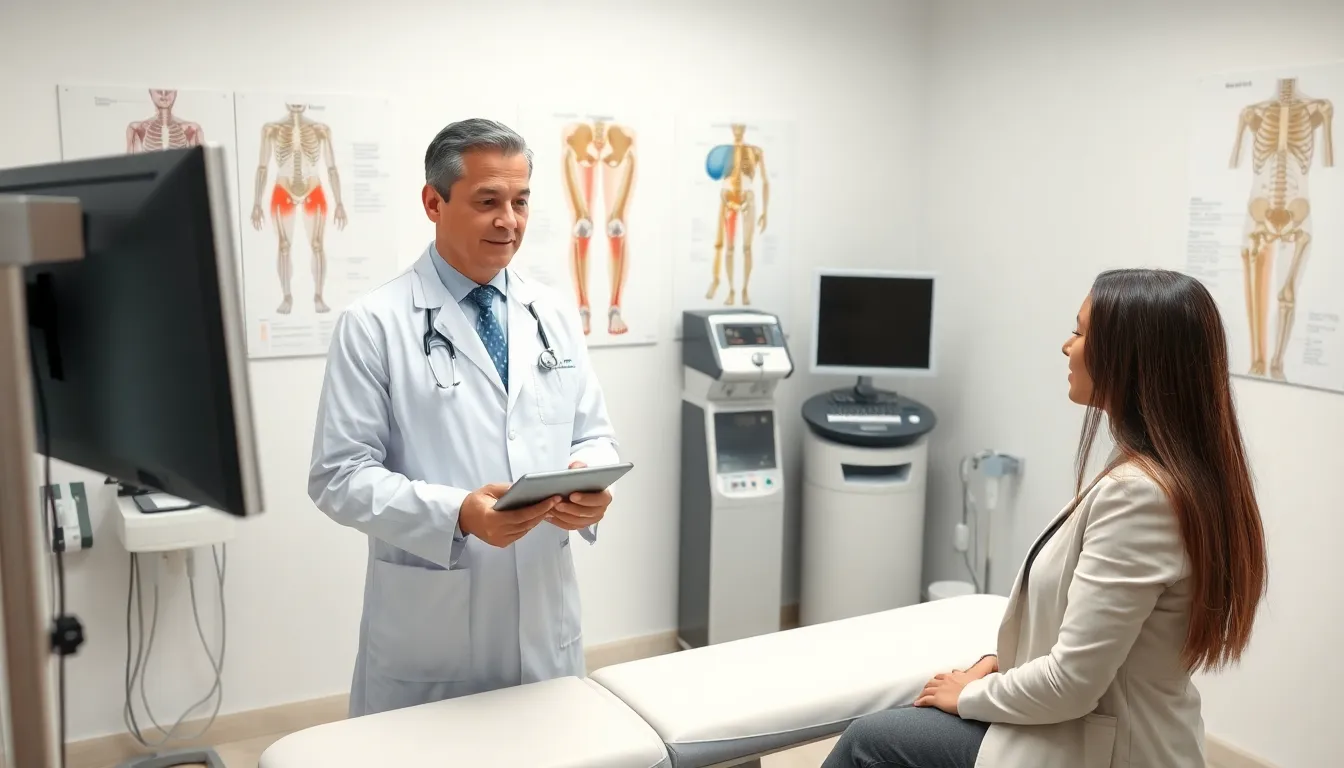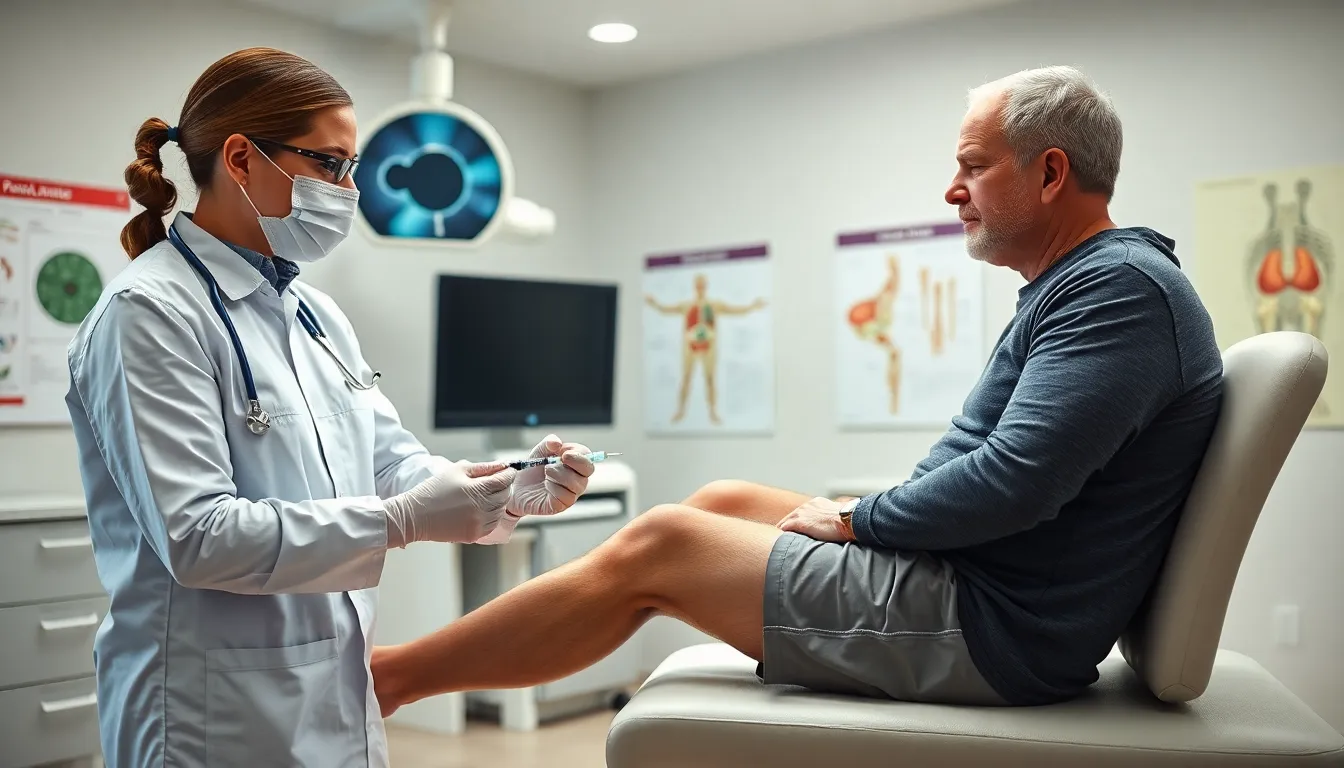Ever felt like your joints were auditioning for a role in a horror movie? You’re not alone. Joint pain can turn every small movement into a daily drama. Enter viscosupplementation, a procedure that sounds pretty high-tech because, well, it is. This guide dives deep into the whys and hows of this treatment, combining a sprinkle of science with a dash of practicality (and maybe a bit of humor). Whether you’re contemplating it for yourself or just curious about the latest medical jargon, you’re in the right place.
Table of Contents
ToggleWhat Is Viscosupplementation?

Viscosupplementation is a medical treatment designed to alleviate joint pain, especially in the knee, by injecting a gel-like substance, often hyaluronic acid, into the joint space. This gel mimics the natural synovial fluid found in healthy joints, which helps lubricate and cushion the joints, enhancing movement and decreasing pain.
The concept of viscosupplementation emerged from the need to treat conditions like osteoarthritis and other degenerative joint diseases. Patients often find themselves seeking relief from the discomfort that can limit their daily activities. So, while most folks might think it has something to do with fancy coffee drinks, it’s actually about making your joints feel a whole lot better.
The Science Behind Viscosupplementation
At its core, viscosupplementation relies on the properties of hyaluronic acid (HA). This naturally occurring substance is crucial for maintaining joint health through its viscous and elastic qualities. Think of HA as the oil in your car’s engine: it keeps everything running smoothly.
In osteoarthritic joints, the concentration of this important fluid diminishes, leading to increased friction and pain during movement. Viscosupplementation aims to restore the natural balance by injecting HA directly into the joint. Studies have shown that this can not only improve joint function but may also reduce the need for more invasive procedures, like surgery or long-term medication use.
But how effective is it? Research indicates that viscosupplementation can reduce pain and improve function for several months, and some patients experience benefits for up to a year. Pretty impressive, right?
Indications for Viscosupplementation
Not everyone is a candidate for viscosupplementation: there are specific indications that make this treatment a viable option. Most commonly, it’s recommended for those suffering from osteoarthritis, particularly in the knees. But, other joints, like the hips and shoulders, can also benefit from the procedure.
Typically, candidates include:
- Individuals aged 40 and above with early to moderate osteoarthritis.
- Patients who have exhausted other treatments, like physical therapy or anti-inflammatory medications, without sufficient relief.
- Those who prefer a non-surgical option before considering more invasive measures.
Consulting a healthcare provider can help determine if viscosupplementation is the right step towards pain relief for specific situations.
The Viscosupplementation Procedure
The actual viscosupplementation procedure is relatively straightforward. It typically occurs in an outpatient setting, meaning no lengthy stays at hospitals are required. Here’s how it generally unfolds:
- Preparation: The doctor ensures a sterile environment and explains the procedure in detail, covering what to expect.
- Anesthesia: Local anesthesia may be administered to minimize discomfort during the injection.
- Injection: Using imaging guidance, the physician injects the hyaluronic acid into the affected joint space. Patients often compare the sensation to getting a flu shot, brief and manageable.
- Post-Procedure: After the injection, the doctor may recommend specific activities to help the patient recover without exacerbating any discomfort.
The entire process usually takes less than an hour, making it a quick solution for addressing joint pain.
Post-Procedure Care and Recovery
Recovering from viscosupplementation is generally uncomplicated. Patients are typically encouraged to:
- Rest for the first 24 hours following the injection, avoiding any strenuous activity.
- Gradually resume normal activities as tolerated, listening to their body.
- Attend follow-up appointments to monitor progress and effectiveness of the treatment.
Cold therapy can help manage any swelling at the injection site. It’s advisable to keep an open line of communication with healthcare providers about any concerns, as early intervention can prevent complications.
Risks and Side Effects of Viscosupplementation
While viscosupplementation is often a safe procedure, it’s essential to be aware of potential risks and side effects. Some common side effects include:
- Mild swelling at the injection site
- Localized pain or discomfort
- Rarely, allergic reactions to hyaluronic acid
Serious complications are quite uncommon but can include infection or nerve damage if the procedure isn’t performed correctly. Patients considering this option should always discuss any health concerns with their doctor to weigh the pros and cons effectively.
Alternatives to Viscosupplementation
Viscosupplementation isn’t the only player in the joint pain relief game. A range of alternatives can alleviate discomfort, including:
- Physical therapy: Tailored exercises can greatly improve strength and mobility.
- Medications: Over-the-counter or prescription pain relievers like NSAIDs may be effective for some.
- Corticosteroid injections: Providing fast relief, these injections can reduce inflammation in the joint.
- Surgical options: In severe cases, joint replacement surgery may be necessary.
Each option has its benefits and drawbacks, so consulting a healthcare provider can help identify the best pathway for managing joint pain.






